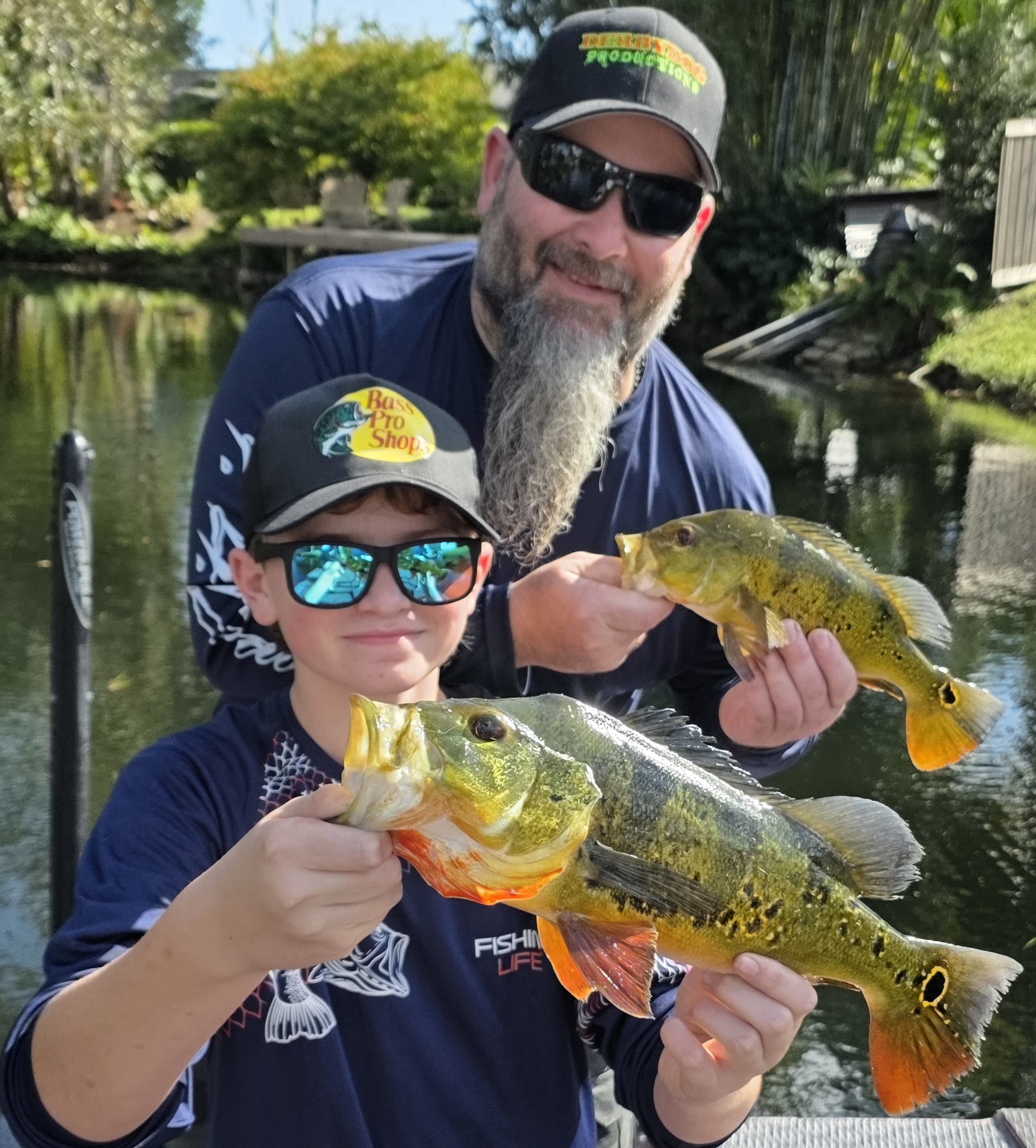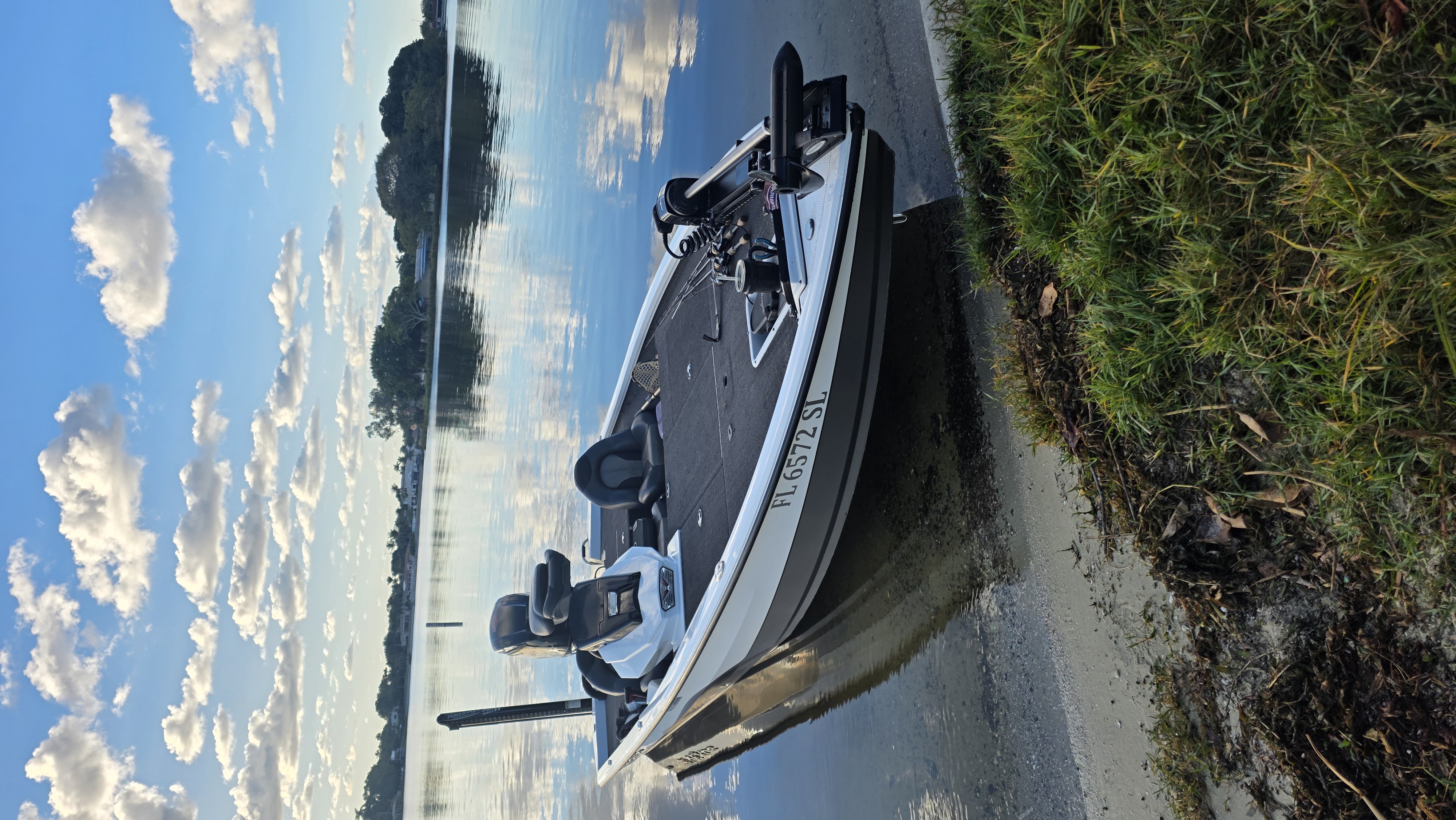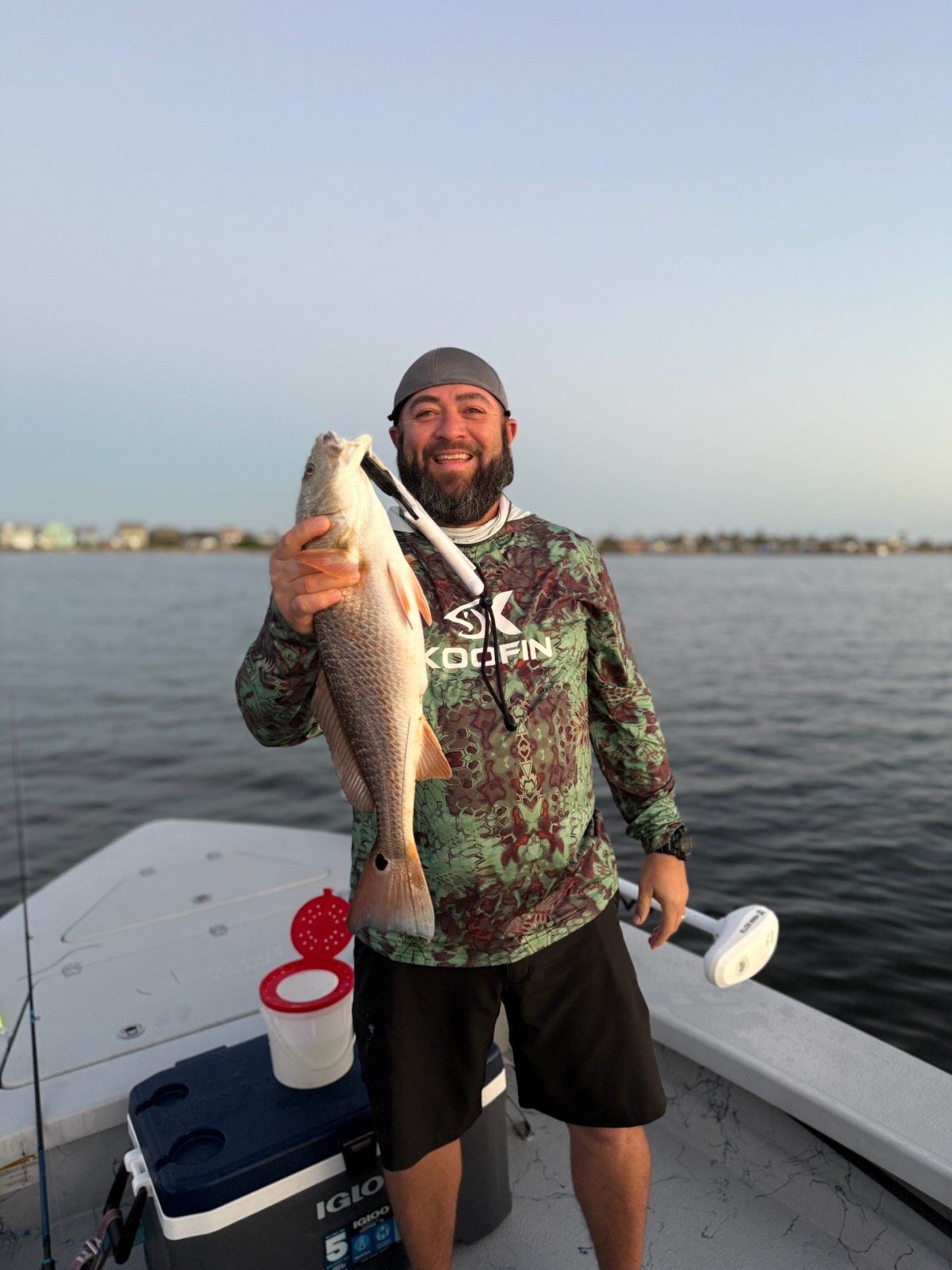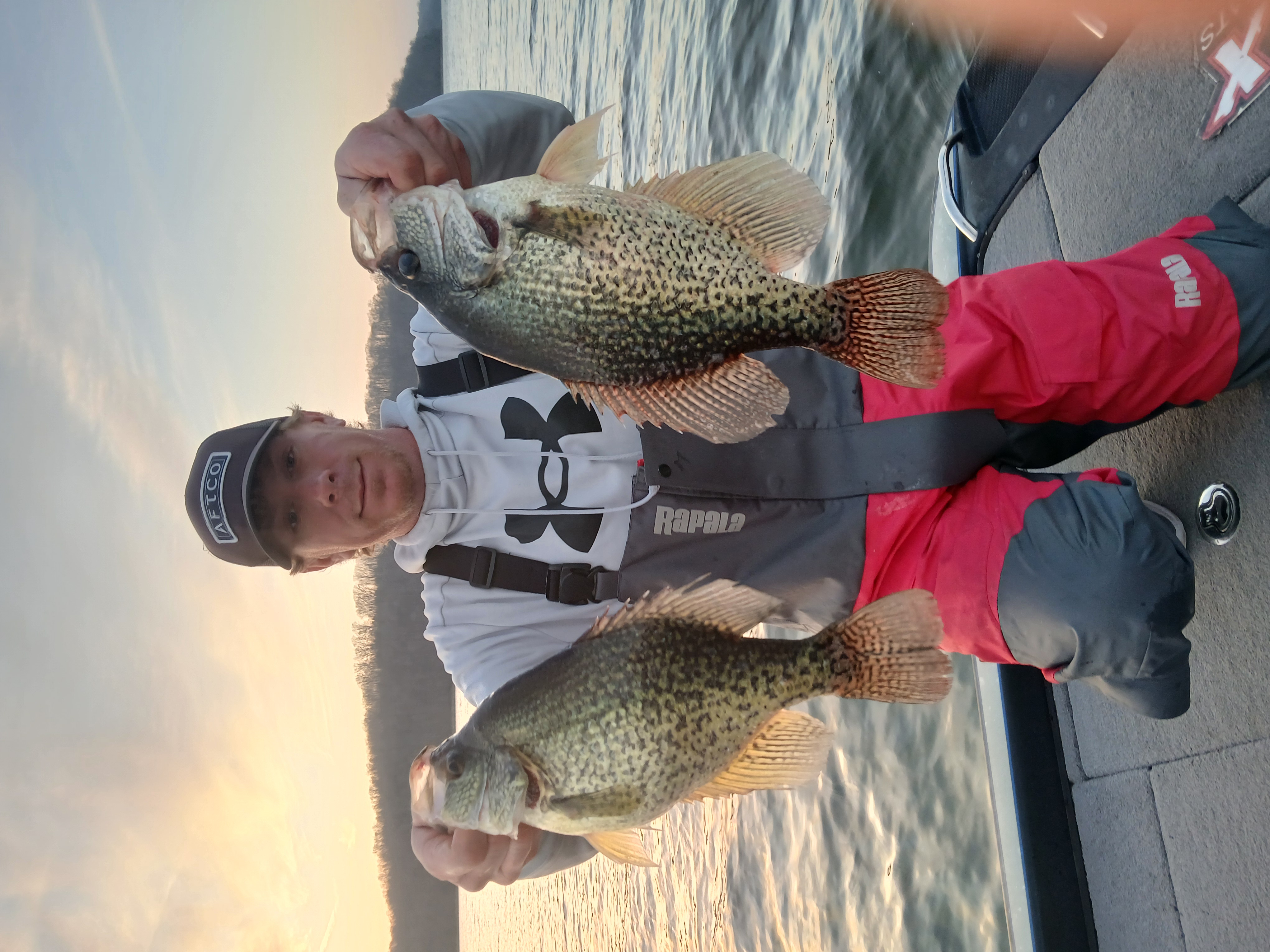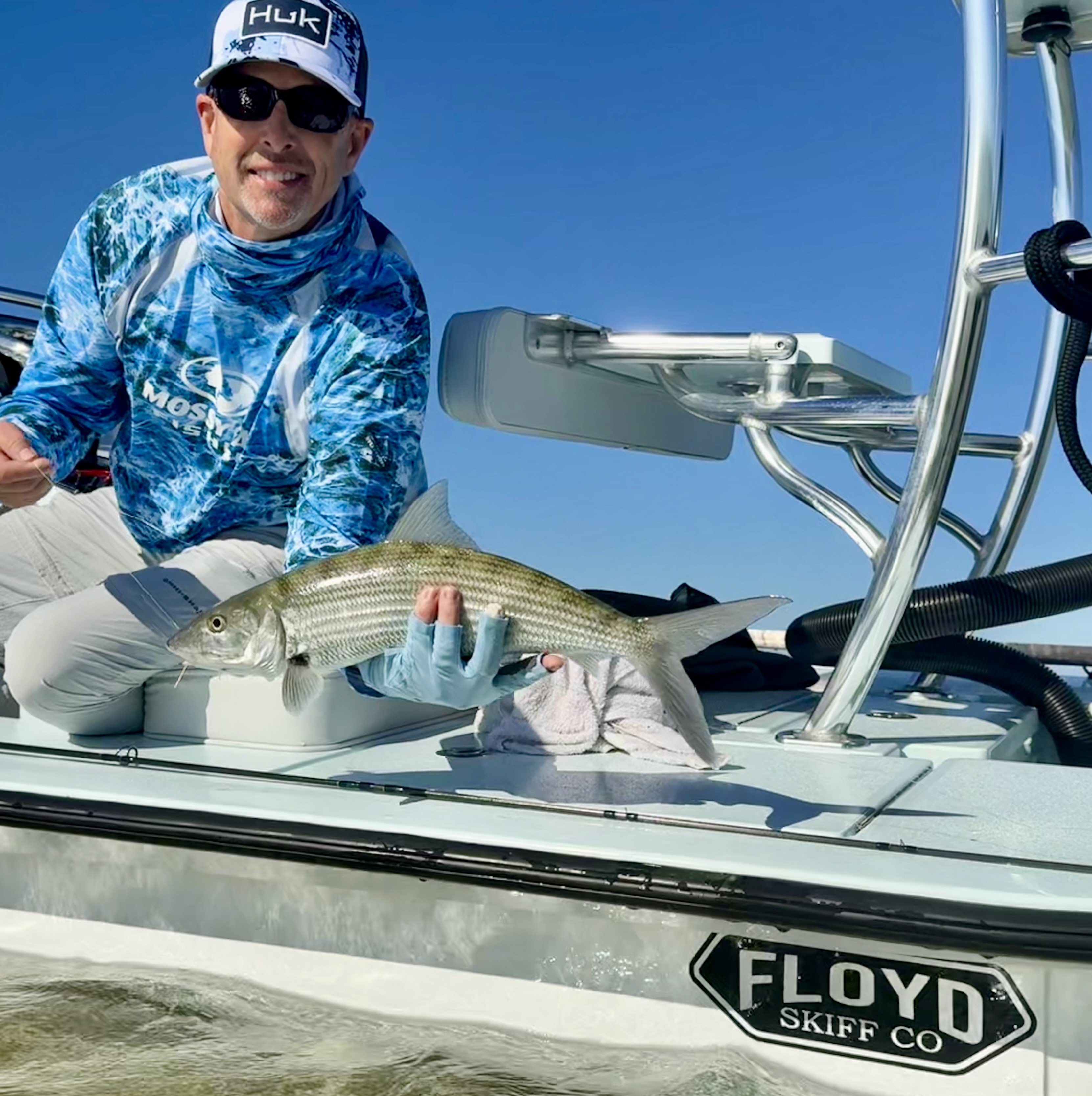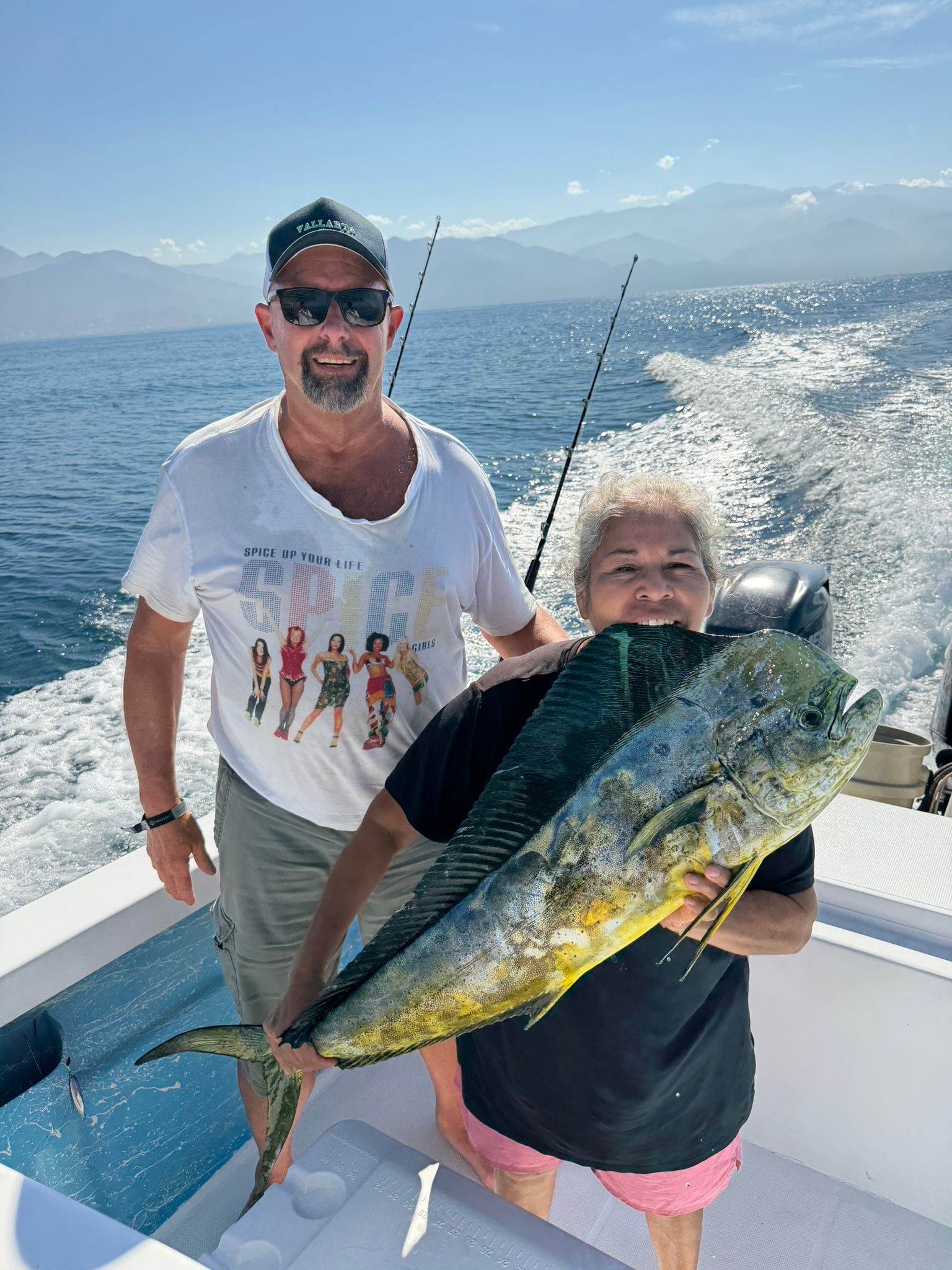Miami Peacock (4-8HR)
Lake Ida (4-8HR)
Inshore Fishing in Corpus Christi
Hook, Line & Memories Fishing Trip
Normandy Livescope Crappie Trip
Inshore, Nearshore Fishing in Orange Beach
Spring Break 6 Hour Special Rate
Inshore Fishing Sanibel PineIsland
Inshore, Flats Fishing in Freeport
Fish West Galveston Bay And Pass
Texas City On Artificial
Inshore, Flats Fishing in Key West
4-8 Hour Inshore Fishing Trip
Inshore, Deep Sea Fishing in Puerto Vallarta
31 Ft Grady White Half Day
We started Captain Experiences to make it easy to book fishing and hunting guides around the world. With over 2,000 Damn Good Guides, our platform makes finding and booking a trip seamless. Head here to check out our trips.

Austin and Jonathan on the yellowfin.
Dar es Salaam from the air is unlike any major city you have seen. It is a city of over 6 million people, yet most buildings are not more than 2-3 stories, and many people still have farms in their backyards in the city proper. Most transportation is on foot or via small, motorized rickshaws, and the footpaths cross the city like game trails, meandering through the buildings in the path of least resistance.
Dar was founded from the remnants of an old fishing village, and the natural harbor provided here makes the city one of the most prominent ports in East Africa, supplying the goods for many of the countries inland of here. The fishing culture is still alive and well after all these years, but remains a small industry.
We are here to spend 48 hours offshore patrolling Latham Island for swordfish and dogtooth tuna, one of the most unique and sought after members of the mackerel family.
After flying from Ruaha to Dar, we head from the airport to the Slipway, a vibrant and modern part of town on a peninsula that sits near the mouth of the harbor and houses the marina. We meet our captain and catch a quick water taxi to our vessel, an ~45 foot cat that will be our home away from home for the next few days. Captain Jason introduces us to our all-star crew consisting of Madi manning the helm, Ali as first mate, and Bernard as deckhand, and with little fanfare we haul anchor and point the bow to Latham.

Taking the water taxi out to see the boat and meet the crew.
Our boat has double forward berths. One has two bunks and a “queen” bed. The other holds the shower/toilet, a kitchen, and another “queen”. The living area above is small but serviceable, with two couches that can double for sleeping spots (Jason uses one, Madi sleeps on a pad on the bridge, and the mates sleep on the deck). The boat is a gracefully old but well kept. Everything is well put away in its place the entire time we are here (aside from our own mess) and the whole operation runs like a well oiled machine.
As we get under way, the mates get lines out in the water and for the duration of the trip there will not be 5 minutes where we don’t have our full spread out (usually consisting of 7-8 lines) - the mates (Ali and Bernard) are efficient and lines are brought in and put out more seamlessly than I have seen on many an offshore trip.

Skirts organized and ready to be thrown out on the troll.
We start with some skirted ballyhoo behind the boat at a range of depths as we troll out of town. We have about 40 miles to Latham and plan to make the most of it.
We leave port at about 5 pm East Africa Time and catch one big narrow-banded mackerel on the way out of town as we are running between giant anchored cargo ships. This is a beautiful fish that looks much more like a wahoo than its closer relative the kingfish. It is shaped like a king but colored like a vibrant wahoo.

Jonathan and a narrow-banded mackerel caught leaving the harbor of Dar.
Bring Out the Glowsticks: Hunting for Swordfish
As evening comes and we get 15 or so miles off the coast, we change gears for the rest of the troll to Latham as we have a new target: swordfish.

Glowsticks on the deck just after bringing up the first sword.
Swordfish are an interesting quarry. They are one of the deepest fish you will regularly target and the bite is hot closer to the surface at night. We set up deep dropping rigs with green glowsticks to grab their attention to our squid, and drop two down about a thousand feet. We also hang two lines off the back in the event of any topwater sword action, which can happen occasionally outside of Dar.
The troll is slow for swords and we amble along in the dark, and some larger than normal swells begin to rock us to sleep. We are working with jetlag and about 4 hours of irregular sleep, combined with the energy loss of running around for 24 hours in the hot Tanzania weather trying to get to the boat in time.
Dom peels off to sleep in one of the berths, shortly followed by Jonathan.
The mates curl up in a corner to get some rest before the big night ahead of them.
Jason heads up to the bridge to talk shop with Madi.
And soon Austin and I are left alone on the deck, sitting and staring at the 5 ft tall, glowstick-filled swells behind the boat.
We find ourselves without much to say in our exhaustion, and reach a point of just staring at the intersection of the stars at the horizon and waiting.
As the night gets later, our eyelids start to droop and we struggle to stay awake. Austin opens his mouth to say “Alright, its getting late, I think I might get some re….” and just then we hear a tick of the reel.
We look at the reel in confusion. We expect line to go flying, but nothing happens. The boat hangs in suspense until Jason all but jumps from the bridge to the deck and grabs the reel. He jigs the line quickly, yells at Madi to reverse, and the line starts tearing.
We are shocked. This is the lightest bite I have seen in my life, especially for such a big fish. Jonathan hears the reel running and jumps out of bed, still half asleep but running out screaming “FISH ON! FISH ON!”
I strap on a belt and take the rod and get fighting.
Reeling in a swordfish is an interesting endeavor. They don’t have a swim bladder so they can swim up and down the water column with ease, rising or descending 300 yards in seconds. You have to alternate between long runs by the sword and quick reeling where you sometimes don’t even think the fish is still on the line (he is, he’s just swimming towards you). When he runs at you, reel fast, else you run the risk of a bill wrap and losing your fish.
After a 15 minute fight we start to see the glow of the glowsticks, and a minute later we have the fish gaffed and in the boat. The sword is about 100 pounds - slightly above average, but by no means a monster. We celebrate our first night’s success with a celebratory taste of Treaty Oak Bourbon that we schlepped over with us from Austin.

Jonathan and Attison with the sword.
Reinvigorated from the fight and pumping with adrenaline, everyone is awake again and ready to go, but after getting the lines back out and sitting back down, we start to lose energy and drift to sleep again. Dom peels off again, then Jonathan.
ZING!!
The line starts truly running this time like we haven’t heard yet. This is a big fish. Jonathan flies up from his bunk again and nearly falls out of the boat in his excitement. “FISH ON! FISH ON! FISH ON!”
Austin straps up to take this one and from the get-go the going is super tough. It is impossible to gain line for 3 minutes, and then all of a sudden super easy - the fish is ascending rapidly. Austin reels and reels and reels to keep up. Then the fish dives again and takes back every bit of line and more. Austin strains under the pressure. The fish flies towards the boat again and Austin tries to keep up, but this time the fish gets the better of us and gets off.
There is very little you can do here with a big sword, and we estimated this fish could have been all of 3-400 pounds. As Austin says, it is a privilege to even fight a fish of that size, and you need to respect them.
We repeat our same pattern, with Austin and Dom peeling off to go to sleep, and then the mates, and eventually our eyelids get the better of us all in the wee hours in the morning and we all fall asleep in uncomfortable positions waiting for more hits. Lines are still in the water, but all remains quiet for the remainder of the night.
The Latham Island Wake Up Call
We open our eyes to the morning sun and the sound of birds chirping - we have made it to Latham in the middle of the night and woken up anchored outside the main reef.
Latham itself is a tiny island, maybe a quarter mile in diameter, and is little more than a coral atoll that sits slightly above the water. It is a sanctuary for tired bird life, and on the dry outcropping above the water’s surface, that’s about all you’ll see. Below the water, you’ll find all manner of sea life. Latham sits on a big 15 mile wide plateau that is between 15 and 40 meters deep. Then it drops off to 70-200 meters, and as the only landmass for 40 miles in every direction, this is the perfect aggregator for fish.

Austin with a big barracuda caught on the troll (shoutout @cudasunlimited).
After a quick swim in the current off the back of the boat, we get underway and start our fishing for the day. We start with a quick troll around the island and land a big 50 inch barracuda. The barracuda here are super prevalent, but unlike in the US we are never bothered by cuda or sharks while fishing. This might just be 100% luck, but the other conclusion is that given much higher concentrations of fish and many fewer anglers, these predators both have enough to live on and have not learned to mess with fish on the line as much.
We pull in the lines and begin to slowly motor around the island in about 30 feet of water, throwing topwater and hoping to land a GT. We throw mostly conventional, although Austin brings out a 12 weight to try. Giant trevally here are known to get to mammoth sizes (in fact, a few records have been set in these waters). It isn’t unheard of for 100+ pounders to be fought on a regular basis.

Trying to catch some GTs off a popper at Latham Island - no luck here.
We don’t have any luck so we decide to head deeper and try our luck jigging. We bust out a few 300 gram jigs and drop them down in about 300 feet of water, and within minutes are pulling up big ruby snapper. We bring a number of 15-25 lb snapper to the boat. One seems to be a hybrid of some sort - it is thinner, darker, and has the mouth of a snook rather than a snapper (but with huge pink lips). We open it up and the filet is maroon colored, and we make some quick sashimi for lunch (tasty, but not as good as red snapper. A little tougher but with a good fresh flavor).

Ruby snapper and unidentified relative pulled off the bottom.
Dogtooth Tuna Hunting
With some jigging under our belt we decide it’s time to target big daddy - the dogtooth tuna.
Dogtooth tuna are a pelagic fish in the mackerel family (related to tuna, but actually a mackerel). They are spread throughout the Indo-pacific region and are known both for their size and crazy maw filled with sharp teeth. They are often found haunting dropoffs and are one of the major apex reef predators in the Indian Ocean.
To catch them, we first need to round up some bait. We throw some small skirts out and round up a few bonito for the tuna tubes. Once we have two bonito ready to go we hook them up and drop them down on the downrigger. We get a few bites early but nothing really hooks up.

An unsuccessful attempt to land a dogtooth tuna.
I am sleeping in the only shaded corner of the boat around noon when Austin screams at me to get up, the line is screaming, and I jump up in a post-sleep confusion. I try to mutter “you got it” but Austin throws the belt on me and I step up to the plate and start reeling. I hardly even know what I’m reeling but it seems pretty big.
The fight isn’t crazy, but the fish tugs a few times and we trade blows back and forth. I still have no idea what’s on the line but I do when I see color and teeth. It’s a big ole doggy! (actually a very medium sized doggy, but we’re so excited it doesn’t matter. This is what we came for).
I bring it to the port side and hold the fish there while the crew carefully gaff the fish through the soft bottom of the mouth to avoid injuring it. Aboard the fish comes and boy is it a beauty. The fish itself is a beautiful gray, not unlike an amberjack in shape, and has some amazing pearly whites. He is probably around 50 pounds, and maybe 50 inches long.
We quickly get a hose in his mouth to keep him breathing and take some pictures before plunging him back to the deep. We use the hose to run water through his gills to ensure the fish stays alive in the heat while we quickly take a few pictures, and I plunge him back in head-first.

We are all impressed with the determination of the crew to get this fish safely back in the water and we are proud to see the dogtooth swim off strong. Dogtooth tuna are one of the main draws to this region (indeed, our captain has set “5 or 6” dogtooth tuna world records), and with many being taken as bycatch commercially, it’s incredibly important to preserve the population.
Tanzanian Offshore Conservation Efforts

A few locals heading out in a dhow.
While this is a fishery that has existed for hundreds if not thousands of years, it is also one with a troubled past. The local boat of choice here is called a dhow which is unpainted wood and about 15 feet long with a small triangular sail in the middle (but most of their masts are for show, they are all puttering around on small engines). The ships haven’t changed in hundreds of years aside from the usual addition of a 15-50 hp engine commonly strapped on the back these days. Most dhows will still use wind power when they are able to save money on the cost of fuel.
We see tons of dhows at Latham which is 40 miles out, and they are manned by 4-5 guys with 3-4 hooks in the water 24 hours a day. They will be out for a week or two at a time with all the anglers living in the open hull of the boat.

Dhows bottom fishing around Latham Island 50 miles off the coast.
Some of these local fishermen (understandably) got tired of handlining fish from hundreds of feet down and started switching to dynamite fishing, mainly for yellowfin. They would make bombs from ammonium nitrate with blasting caps that they would steal from quarries nearby, and would blow them overboard. A few divers would then swim down and try to recover as many yellowfin as possible.
The problems with this are many. First, there is a serious danger and risk to the humans involved. Second, the damage to the reef systems can be prolific, and habitat is destroyed or damaged for years. Third, the number of fish that are killed accidentally are incredible. Entire bait balls will be destroyed in one fell swoop. And lastly, tuna sink! If the dynamite kills a number of tuna, divers will only be able to recover a few.
Tuna populations were quickly depleted, and luckily this practice was banned in 2020, with police patrols increased to monitor the coastline and ensure compliance with the new laws.
Our captain explains that a few local members of the angling community are pushing hard to continue this conservation push and extend the law not only to just ban explosives, but also set size and bag limits for key species, and to conduct population surveys.
Currently very little is done in terms of regulation, and a big problem is no longer the dhows, but large foreign fishing vessels from Asian countries that come over and fish these bountiful waters, taking countless fish back with them.
Jason is working with officials in his government to try to spark new legislation that will protect the species all anglers here (both recreational and commercial) depend on. He also works to educate local captains, teaching them they can make more money with catch and release tourism rather than catch and kill commercial fishing.
Nonstop Offshore Action: A Healthy Fishery

Pulling one of many wahoo over the gunwale.
For now, the waters off Tanzania hold an incredible array of fish and many of them, and we continue to have one of the most productive offshore trips any of us have ever had.
The boys are waiting on reels to run and Austin sees something snap one of the outer lures. He says “did anyone else see that lure get snatched?” And right as he is finished speaking the reel rips. He grabs it and brings in a 40 inch cow mahi and we celebrate another species with another Safari beer.

A nice cow mahi caught on day two.
We catch a big rainbow runner and throw it in the tuna tube to use as bait for something big later.
We get doubled up on a mahi for Jonathan and a wahoo for Dom. We thought the mahi was a bait fish because it bit a tiny skirt, and then it broke off right at the end as it was leadered. We land the wahoo and it was about 4-5 ft.
Once we bring those fish to the boat the yellowfin bite really turns on. We land 5 within 30 minutes and 7 within the hour, all about 10-15 pounds.

When the yellowfin bite is on, it's on!
For dinner we cook up some snapper and yellowfin both fried and in a curry pasta - this is the fuel we needed to keep going.
We sleep and get up and throw the lines right back in the water.
We land a cow mahi.
We land a big wahoo.
We land a cuda.
We land a wahoo.
We land 3 more cuda.
We land a mahi.
We land a wahoo.
We double up on mahi.
No this is not fake, this is a real play by play of what happens in this fishery. All told we caught 31 fish across ten species in about 30 hours of fishing. We are amazed at how productive this fishery is overall and leave on an offshore high.

Big wahoo like this are a dime a dozen in this healthy fishery.
This is the fourth in a 5 part series:
Part 1: Habari, and Welcome to Tanzanian Fishing
Part 2: A Primer on Tigerfish Behavior
Part 3: Setting the Tigerfish Record
Part 5: Fishing for Rainbows in the Shadow of Kilimanjaro
Attison Barnes
Updated on August 2, 2023

June 22, 2022

June 3, 2021

August 21, 2023

November 15, 2023

November 7, 2023
Related Articles
May 2, 2022
August 2, 2022
April 28, 2023
Featured Locations
- Fishing Charters Near Me
- Austin Fishing Guides
- Biloxi Fishing Charters
- Bradenton Fishing Charters
- Cabo San Lucas Fishing Charters
- Cancun Fishing Charters
- Cape Coral Fishing Charters
- Charleston Fishing Charters
- Clearwater Fishing Charters
- Corpus Christi Fishing Charters
- Crystal River Fishing Charters
- Dauphin Island Fishing Charters
- Daytona Beach Fishing Charters
- Destin Fishing Charters
- Fort Lauderdale Fishing Charters
- Fort Myers Fishing Charters
- Fort Walton Beach Fishing Charters
- Galveston Fishing Charters
- Gulf Shores Fishing Charters
- Hatteras Fishing Charters
- Hilton Head Fishing Charters
- Islamorada Fishing Charters
- Jacksonville Fishing Charters
- Jupiter Fishing Charters
- Key Largo Fishing Charters
- Key West Fishing Charters
- Kona Fishing Charters
- Lakeside Marblehead Fishing Charters
- Marathon Fishing Charters
- Marco Island Fishing Charters
- Miami Fishing Charters
- Montauk Fishing Charters
- Morehead City Fishing Charters
- Naples Fishing Charters
- New Orleans Fishing Charters
- New Smyrna Beach Fishing Charters
- Ocean City Fishing Charters
- Orange Beach Fishing Charters
- Panama City Beach Fishing Charters
- Pensacola Fishing Charters
- Pompano Beach Fishing Charters
- Port Aransas Fishing Charters
- Port Orange Fishing Charters
- Rockport Fishing Charters
- San Diego Fishing Charters
- San Juan Fishing Charters
- Sarasota Fishing Charters
- South Padre Island Fishing Charters
- St. Augustine Fishing Charters
- St. Petersburg Fishing Charters
- Tampa Fishing Charters
- Tarpon Springs Fishing Charters
- Venice Fishing Charters
- Virginia Beach Fishing Charters
- West Palm Beach Fishing Charters
- Wilmington Fishing Charters
- Wrightsville Beach Fishing Charters


